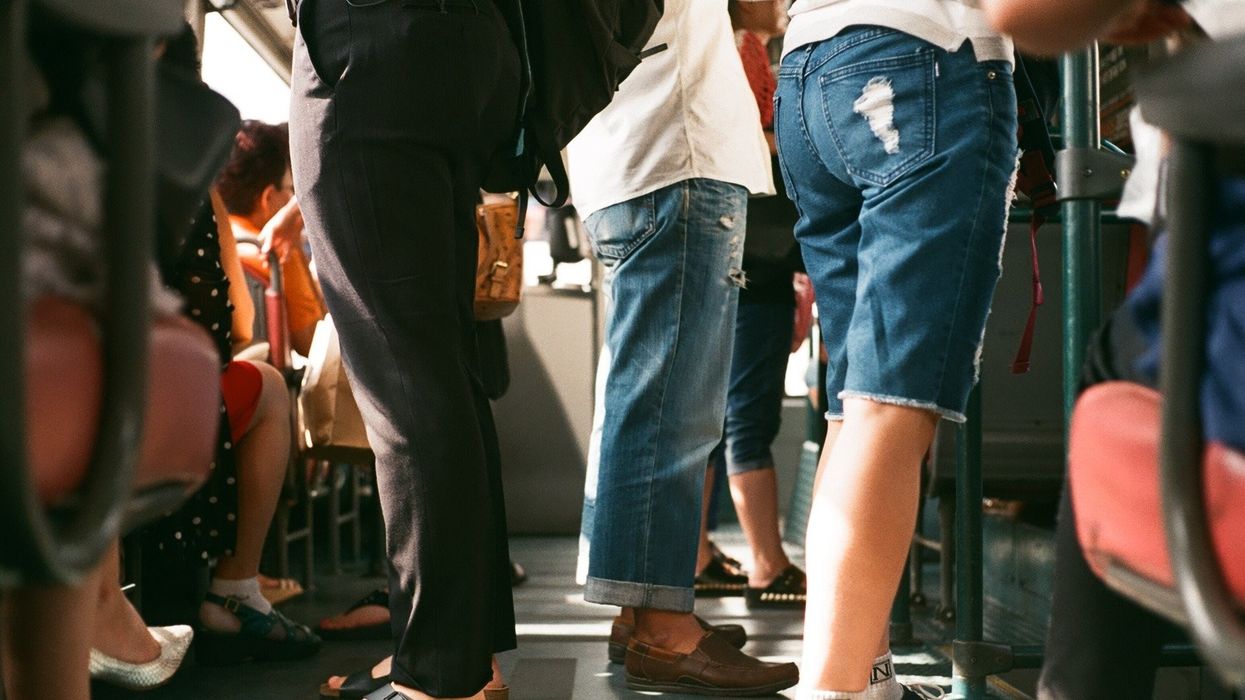Toronto’s subway is not just a way to get from A to B.
Sadly, it’s also a metaphor for the city: an unerringly accurate reflection of everything that’s good, bad and ugly in our fair burg.
As passengers know only too well, lately things haven’t been going particularly well at the TTC. A series of breakdowns in recent weeks left thousands of riders stranded on their way to work or back. The most dramatic example came on November 7 when a corroded cable on the Bloor Viaduct closed Line 2 between Pape and St. George stations during the morning rush.
Little wonder transit users were fuming. The Better Way is no more.
READ: Ontario Line: Ford’s Transit Scheme Is Barely On Track
Whether the cause is crumbling infrastructure or malfunctioning signals, Toronto’s underground is showing its age. And as we are reminded daily, decades of under-funding have taken their toll.
Yes, we know, whole sections of the subway are now closed every weekend so that work crews can update the metro’s aging parts. That only increases passenger frustration. That these closures are scheduled to continue until 2023 is a measure of the extent to which we have deferred maintenance, failed to fully fund operations and generally neglected transit.
But through it all, we’ve never stopped talking about new transit.
READ: Ontario Line Transit Plan Approved But Big Questions Remain
Every mayor and premier takes office with a set of plans for shiny new subways, LRTs and even bus lines. Some want a subway to Scarborough. Others propose subways to suburbs. Former chief magistrate David Miller suggested a network of LRT routes across some of the city’s busiest east/west corridors. That made too much sense for municipal and provincial politicians who did nothing when former mayor Rob Ford and city council killed the plan for “subways, subways, subways.”
Then there’s Mayor John Tory’s scheme, SmartTrack, which still has people scratching their heads.
Given all this, the fact that the Eglinton Crosstown is actually under construction feels downright miraculous. Typically, though, planners opted for a compromise that will be with us forever. Rather than build a proper subway – appropriate for the only street that runs through all Toronto’s former boroughs -- planners decided instead on an LRT. It was another example of Toronto’s willingness to settle for long-term pain for short-term gain.
Interesting, too, that the Crosstown represents our second try at putting transit on Eglinton. The first attempt, initiated by then premier Bob Rae, was killed in 1995 by his successor Mike Harris who spent $40 million filling in the hole.
READ: Believe It Or Not, The TTC Is Canada’s Best Public Transit System
Perhaps we shouldn’t feel too bad. When former TTC general manager Andy Byford was named president of the New York Transit Authority in 2017, the now embattled administrator took over a crumbling network that has been a battleground on which the Big Apple and the state have been fighting it out for decades.
Here and there, the issue is that no one wants to pay for something as deeply unsexy as track signals, station maintenance, cleaning the washrooms, air conditioning…that sort of stuff.
It’s much more fun – and attention getting – to promise new service to long suffering parts of the city where public transit is conspicuous in its absence. Not that Torontonians mind driving, the obvious alternative to transit. Besides, outside the old city, roads were designed and built for the car, anyway.
It was Tory who inadvertently revealed the key to understanding attitudes to transit. As he wrote in a letter to his executive committee during his first term, public transit is helpful to people who can’t afford a car. In other words, it’s largely a stopgap measure, temporarily useful, but hardly essential.
Of course, TTC under-funding started long before Tory.
And let’s be honest, a utility such as transit could never get enough money. There will always be something that could be updated, improved, expanded…. But the deterioration of daily service is thrown into sharp relief by something like the opening of the $3.2-billion subway extension to Vaughan, especially since it carries fewer passengers than the King streetcar.
READ: GO Transit Expansion Leads To Overcrowding Concerns
It’s tempting to argue that those funds would have been better spent bringing the existing system to a state of good repair. But that wasn’t an option. The money was available for a subway, not maintenance. Like the Sheppard Line before it, the Vaughan extension was conceived as a vote-getter. New subways serve political purposes better than does track maintenance. Money for rotten cables will just have to wait.
Given the state of Toronto transit, it’s time our provincial and civic masters grasped that there are votes to be gained by making transit work rather than knee-jerk promises of endless expansion, regardless of how welcome those new lines might be. Infrastructure isn’t sexy, but clean, convenient, reliable transit definitely is.
Simply adding ridership to a network already bursting at the seams no longer makes sense, even politically. Overcrowding at Bloor station, for example, can be dangerous at times. Though Premier Doug Ford’s proposed Ontario Line would take some pressure off the subway’s busiest line, the lack of planning and due diligence indicates a lack of seriousness so profound that many doubt the new route will ever be built.
Maybe next time.





















